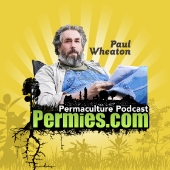dan Faling wrote:So I planted heirloom kentucky wonder pole beans, and the beans that I planted all looked the same, however the beans that I am harvesting for seed, look nothing like the originals. The run a gamut of sizes and colors. What is the reason for this and should I still save them? Trying to save as many seeds as possible for coming years.
A photo would help...
Beans picked green have a different color than beans picked dry. They are different sizes.
Environmental conditions can modify the size and shape of a bean compared to it's parent.
Beans change color as they age, so this year's crop may not be the same color as beans harvested a year or two ago.
Some beans experience "color reversals" which don't change the genetics, but cause the beans to be different colors.
Beans that get wet after drying down, but before picking can change colors.
F2 hybrids might produce different colored seeds.
Heirlooms are naturally more diverse than modern cultivars.
People forget what they planted, or misremember.
Kids move labels.
Animals move seeds.
Volunteers from prior years or spilled seeds grow in this year's bean patch.
And I'm sure there are lots of other reasons for a bean to be a different color than expected.
I prize diversity in my garden. If you value uniformity, then replant those seeds that look most like the parent, and eat the rest, or save the odd seeds as an emergency seed stash.
The way I save beans:












